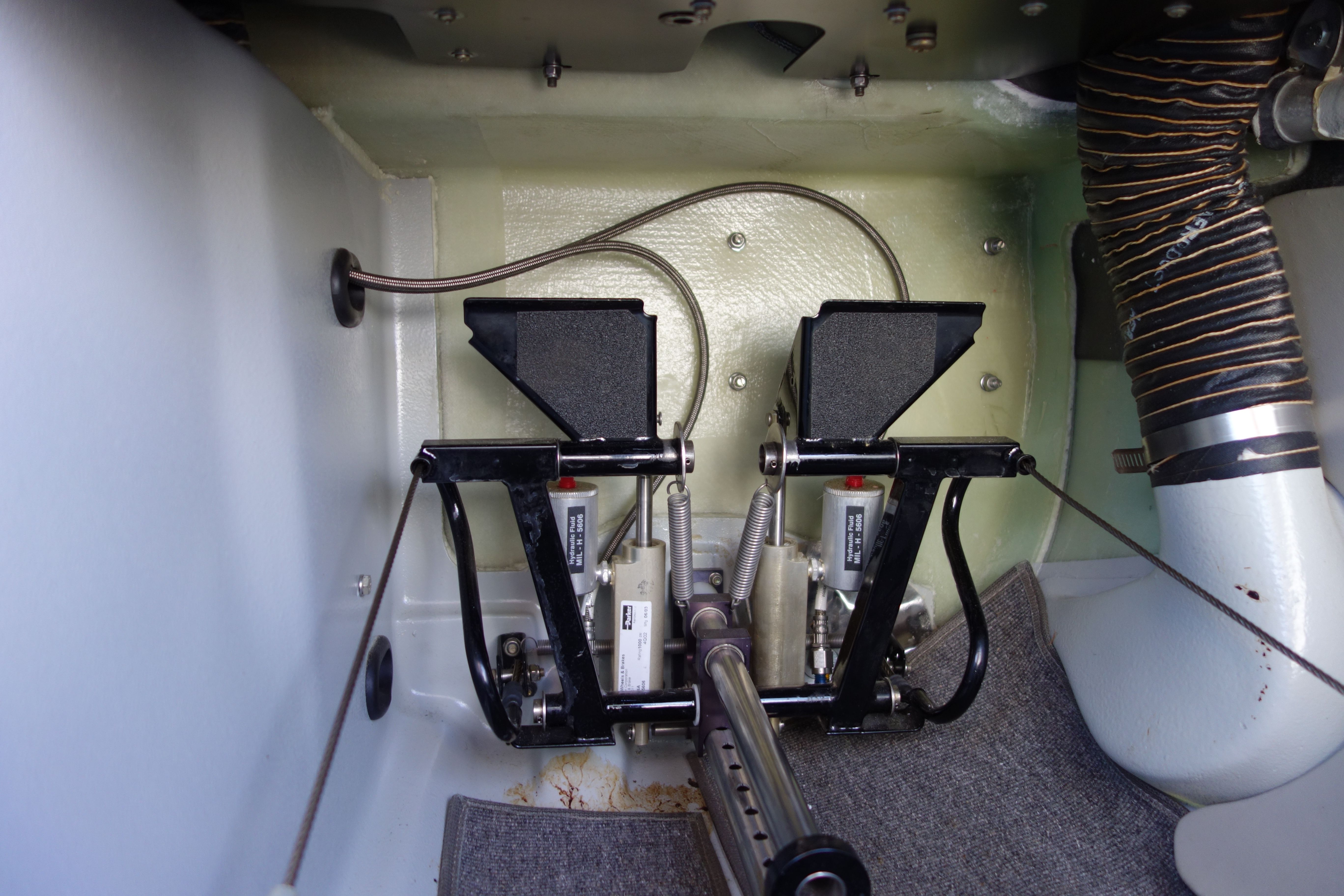Things I like about the DA40...
Things I don't like about the DA40...
1. Castering nosewheel, so a lot of braking steering at low speed.
2. The center stick is fun but unlike most airplanes with a center stick, you can't readily use a kneeboard or put charts on your lap. It's too close in. That scenario favors a Cirrus/Airbus/F16 style side stick. Don't get me wrong, if I could afford to rent an F16...
3. My (rental) DA40 could not idle at a normal speed due to vapor lock. Probably from a tight engine bay. We are talking about California. Consequently, the engine had to be semi gunned and more brake wear on the ground.
4. Range was limited. You really never had a good feel for how much fuel you were actually carrying because the gauges were affected by the high dihedral of the wings, and visually mostly full tanks would look empty when you viewed them through the filler port. I forget what the range is (I'm too lazy to look it up right now) but it was less than I was comfortably dealing with in any other plane.
5. You get beat up a lot. That is the trade between performance and low stall speed.
I view the DA40 as a plane you fly for fun, on good days, but not necessarily the best or most capable for point A to B missions involving distances outside of of its range.
1. Free castering nosewheels definitely take some getting used to. Pilots accustomed to steerable nose wheels tend to ride the brakes too much. Once you get the feel, there is very little differential braking required to taxi (with the exception of strong crosswinds, but then even nose steering aircraft require some additional help to avoid weathervaning). Once on takeoff roll, it takes very little differential braking to stay centerline just as you begin to add power. The DA40 accelerates quickly and develops sufficient rudder authority quickly so you can drop your feet off the brakes quickly. The great thing about free castering is that you can turn on a dime. I can maneuver my DA40 far better and tighter than a C172 or other steerable nosewheel aircraft. Much easier on a ramp to squeeze between a couple other guys in transient parking.
2. The other challenge with the center stick is trying to take a pee on a long flight, but you just need to work out the right technique ;-) The pop-top canopy and fixed seats allow me to simply rest my ipad on my lap when using and tuck it against my left thigh when not needed. Can't do that in a Cessna as it will fall down between the seat and the door, and you really don't want to be opening doors to recover your ipad. I always had to use a kneeboard or mount it in non-Diamond aircraft. The great thing about the center stick is that it gives you ultimate precision doing crosswind landings. I can take a 25kt direct crosswind and comfortably forward slip the aircraft on the centerline. The center stick allows you to rest your steering arm against your leg and make much finer adjustments than a yoke or a sidestick (especially bad is the Cirrus spring-loaded sidestick). That is nearly impossible with other low-wing aircraft without a big risk of scraping a wingtip.
3. Poorly maintained aircraft. Try one that hasn't been beaten to death as a rental.
4. Regarding range, if I run 10-20 degrees lean of peak at 10,000MSL, I can go 6 hours at <7gph and >135knots, so over 800nm on a tank, with an hour reserve. BTW, I never use the fuel measuring device. As long as you reset the fuel tally on the G1000 to full occasionally when you top off, the G1000 totalizer is very accurate. And the analog gauges are highly accurate below 10gal per side.
5. The light wing loading does make for a bit bumpier ride on turbulent days. That's when I fly higher. I have an oxygen generator that allows me to get unlimited time above 15,000' MSL. But again, the landing performance of that big wing is incredible on challenging days. I'll take a few more bumps in trade for much lower chance of a prop strike or worse from a bad landing.
I've taken many 1000+ nm trips, one over 6000 miles and absolutely loved it. And with the back door, it is much easier to load and unload than most 2 door airplanes where you have to wrestle your luggage in and out of the backseat or try to pack in miniscule duffle bags to get it through the luggage door. My backseats also fold down to provide much more room for larger cargo.

